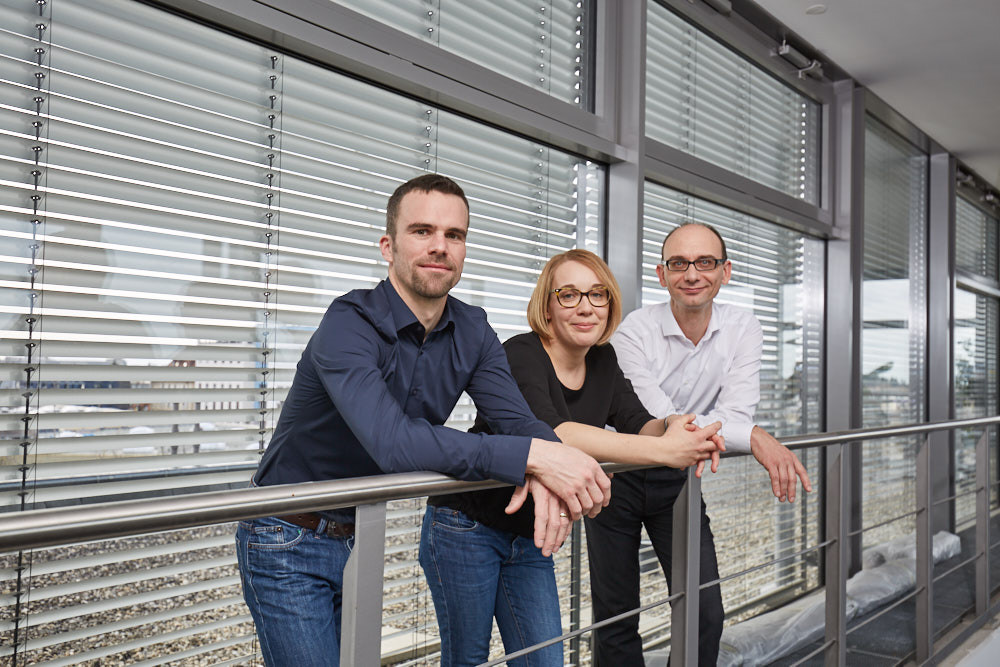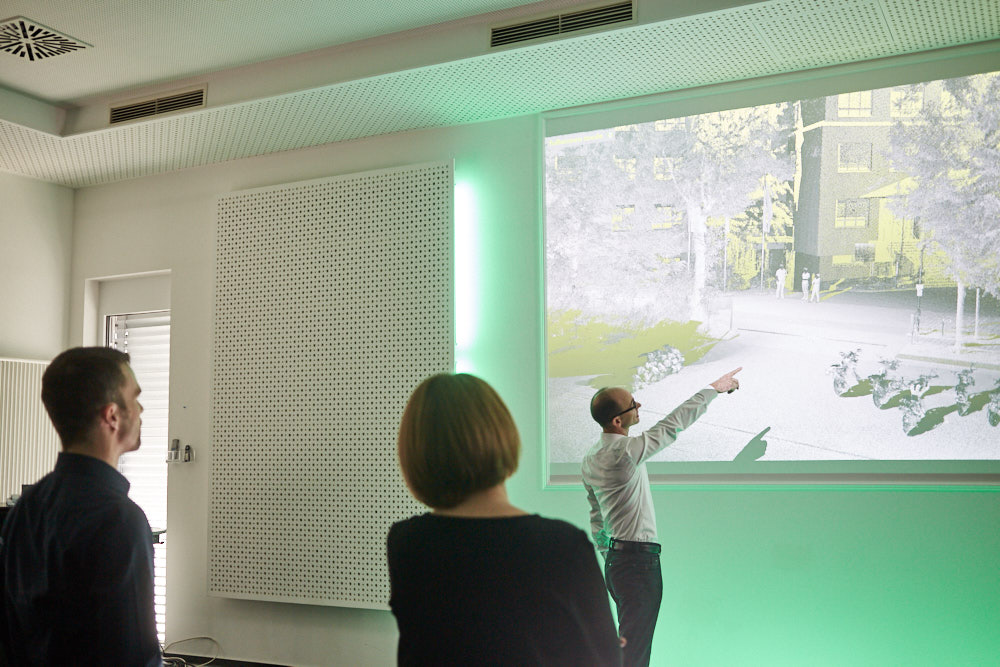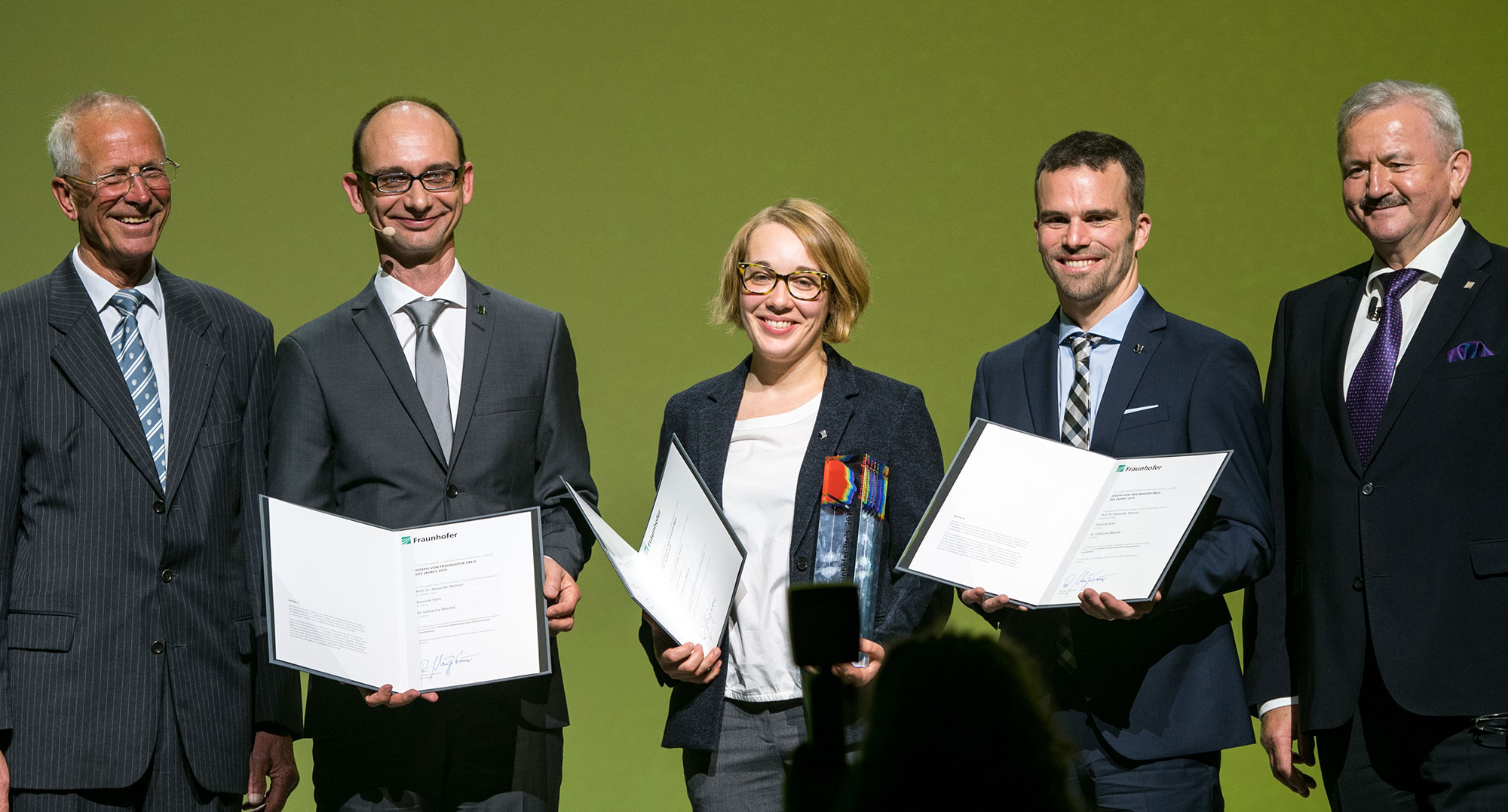Joseph von Fraunhofer Prize
Planning infrastructure faster thanks to machine learning
Autonomous driving or parcel delivery by drone in Germany? The prerequisite for this is secure, stable and fast data transmission, which can only be achieved with an area-wide fiber optic network. However, just to find the right place for cable ducts is a difficult task that takes tremendous effort. A team* led by Prof. Dr. Alexander Reiterer, Dominik Störk and Dr. Katharina Wäschle from the Fraunhofer Institute for Physical Measurement Techniques IPM has developed a novel process chain based on machine learning that solves this issue. For this, the three mentioned scientists are awarded the Joseph von Fraunhofer Prize.



Is your Internet too slow again? In the future, this will change: By the end of 2025, all of Germany should have access to gigabit networks. This is the declared goal of the German Federal Government. Nevertheless, this can only be achieved with fiber optic cables. But where is the best place to put the cable ducts? It has been difficult to answer this question so far. After all, there are countless parameters to consider: Will trees be damaged by the civil engineering work? Are there roads that need to be crossed with expensive pavement? So far, employees of the respective telecommunications company have been walking along every single street in the respective area, taking photos, taking measurements and evaluating them manually.
Route planning: a few days instead of several weeks
Prof. Dr. Alexander Reiterer, Dominik Störk and Dr. Katharina Wäschle from the Fraunhofer IPM in Freiburg provide the solution with their research and were honored with this year's Joseph von Fraunhofer Prize. "We have developed a unique process chain: It can evaluate two- and three-dimensional data fully automatically, recognize the corresponding application-specific objects and integrate them into digital planning maps," explains Prof. Dr. Alexander Reiterer, who is responsible for the development at Fraunhofer IPM. For Deutsche Telekom – the first company to rely on the new process chain from Fraunhofer IPM – this means that planning the fiber optic expansion for a small town will only take a few days instead of several weeks. "First tests show: With the data basis from our tool, Deutsche Telekom can carry out the entire planning process up to 70 times faster – and that fully automatically," adds Dominik Störk, computer scientist at Fraunhofer IPM.
100,000 images as training data
The information gained through this process provides precise data that is recorded by special measuring vehicles that are equipped with cameras, laser scanners and systems for spatial positioning of the data. The trick lies in the evaluation of these data: Using machine learning procedures, the system automatically recognizes which objects are located in the area under consideration. Yet before the system can evaluate the recorded data, it must first be trained. The biggest challenge was therefore to build up an appropriate database for the training. "Around 100,000 representative images were selected from almost two million measurement images and evaluated manually by 50 employees over a period of twelve months. 30 different object classes were annotated," explains Dr. Katharina Wäschle, scientist at Fraunhofer IPM. The resulting data set is unique worldwide in terms of diversity – such as different weather conditions – and quality. With this, the team trained a neural network, the core component of automated recognition. A heuristic set of rules additionally optimizes the evaluation. It contains information such as "manhole covers on the ground" or "sidewalks next to roads." Thus, the system assigns each data point the information to which object it belongs. Extensive map material can be automatically derived from this.
The example of Deutsche Telekom demonstrates how important such semantic maps are: More than 1,800 civil engineering companies in Germany will be using data created by the Fraunhofer tool in the future to expand the fiber optic network. The construction company STRABAG AG, which uses a drone system to monitor construction sites on highways and roads, will also be using Fraunhofer technology for evaluation in the future. The Federal Highway Research Institute (BASt) is using the technology in a pilot project to keep its street furniture mapping up to date.
*The team around the three mentioned award winners includes: Björn Klaas, Dr. Markus Leidinger, Achim Leydecker, Misgana Negassi und Benedikt Rombach.